Malaysian director Woo Ming Jin is in Busan to present his film The Second Life Of Thieves, which is making its world premiere in the Window on Asian Cinema section.
This is his fourth trip to Busan with a film. His debut feature Monday Morning Glory screened here, as did Venice title Woman On Fire Looks For Water, and Cannes title Tiger Factory.
The Second Life Of Thieves follows Mr Tan, a village elder, who discovers his wife has disappeared with his good friend Mr Lai, with whom he had a secret relationship for decades. Lai’s daughter Sandy, who had suspected an affair of a different sort, embarks with Mr Tan on a storytelling journey filled with memories, love, loss and discovery.
You’ve said this film was inspired by your uncle?
The truth is that I had been writing my follow-up film to Tiger Factory for a while – I’d basically gone off to make three local commercial films – and had been tweaking it. I started out wanting to do a story inspired by my lead actor Alan Chung, and then I found out about my uncle, who’d died in 2006 and later I found out had kept a secret life. My lead actor was the same, was married, but later came out. But he’s an actor, so it’s not that unusual. My uncle is a guy who lived in a small town and worked in construction. Anyway, his story was more interesting than my actor’s, although a lot of it is speculation because he’s dead. And I just kind of slowly tailored the film to this source
How did the project come together?
We [Greenlight Pictures] got some funding from Vision Sud Est, Hubert Bals, and then I hooked up with a local company, SKT Films, who came on board. So I thought, ‘Okay, let’s do something’, but I wanted to do something different. The film’s quite experimental, in terms of structure.
Firstly, the major block of the film is set 30 plus years in the past. It goes into a couple of different points of view that I think people may find ‘challenging’. Basically the story is a love story. It’s a love story that has been suppressed for some 30 years.
The daughter, Sandy, thinks that her father has been having an affair with M. Tan’s wife, that’s why they ran off. But the truth is, and the audience only finds out some 50 minutes or so into the film, that she’s mistaken. It’s Mr Tan that Lai has been having an affair with. The daughter and Lai sort of bond.
There’s a side story of Lai, as the village chief, kind of dealing with the social issues in his village as well – with migrants, selfish locals and a mysterious death.
Tell us about your lead actor and casting him.
The strange thing is, I was introduced to him through one of my line producers a long time ago, while I was scouting for Elephant And The Sea (2007), my second film. So we became close because he was a lead in that and my follow up film Woman On Fire Looks For Water as well, and now this. But the thing is, I found out later my mom and his family had been neighbors. She’s been close to his brother. So that’s how I got to know about his story.
I did a short documentary on him as well, on his past, why he got married, had a kid, etc. just for background work. Not really a film…yet. I basically did a bunch of interviews which I included in small parts in this film as well. I cut most of it out but the film has some talking heads, some real, some fictional.
Why do you think it might be ‘challenging’ to audiences?
It’s not like a navel-gazing, long-take kind of film, but it takes an invested audience. The big screen is where it should be seen. The truth is, before this, I had another synopsis that hid the gay element because in the film it sneaks up on you and it’s meant to catch you by surprise. But what I discovered was that people don’t like to be blindsided like that, especially straight people. They don’t like to be made uncomfortable, so I had to put it out in the open.
How long did it take to shoot and where?
We shot over 20 days in Kuala Selangor mostly. It’s a small town where I’d shoot most of my films. A nice sleepy town an hour or so out from the city. Some parts haven’t changed much, so it worked for our period stuff.
What was the shoot like?
Well, it was a difficult shoot, truth be told. I retooled the film over a period of six months, experimenting with different narrative structures. I knew the film would be sort of experimental. It wasn’t your usual coming-of-age or straight forward like Tiger Factory kind of story. So it was challenging to me because mentally I was in uncharted territory. I didn’t want to make a poverty porn kind of film. I wanted my characters to be literary, and I didn’t want to dumb the film down. So it was hard to go in with that mindset. We had to shoot all kinds of stuff that in the end didn’t make it into the final film.
Can you explain what you mean by ‘poverty porn’?
Well, you know a lot of cinema that comes out of our region deals with certain issues that I think are exotic to the outside world. A film like Tiger Factory, or [Brillante Mendoza’s] Lola, those can be lumped into that category. There’s nothing wrong with that at all, don’t get me wrong. But for this film, I wanted to do something else.
There’s a lot of Thai involvement in the film, isn’t there?
We brought most of our crew from Thailand – my DP, assistant cameraman and sound guy because I wanted a different aesthetic. I wanted to work with someone who’d give me something I’m not used to, and of course I admire the Thai cinema culture. So we went with some people that Ed [producer Edmund Yeo] had worked with for photography and Juke [Aditya Assarat] recommended someone for sound. I think it turned out great, the whole Thai experience.
We went to Thailand to finish the film. Lee Chatametikool was our post supervisor. And [international sales company] Mosquito will help us represent the films – both mine and Ed’s. We’re their first non-Thai features. so we’re excited with both this film and Edmund’s feature directorial debut River Of Exploding Durians, which I produced, coming out in Tokyo.



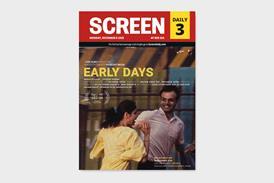



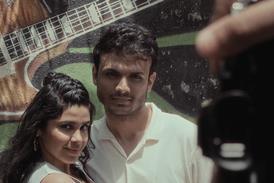





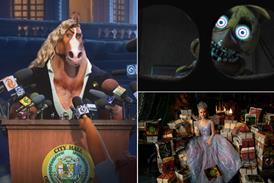
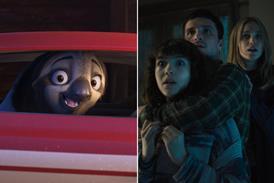

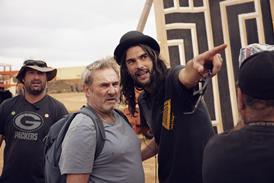







No comments yet